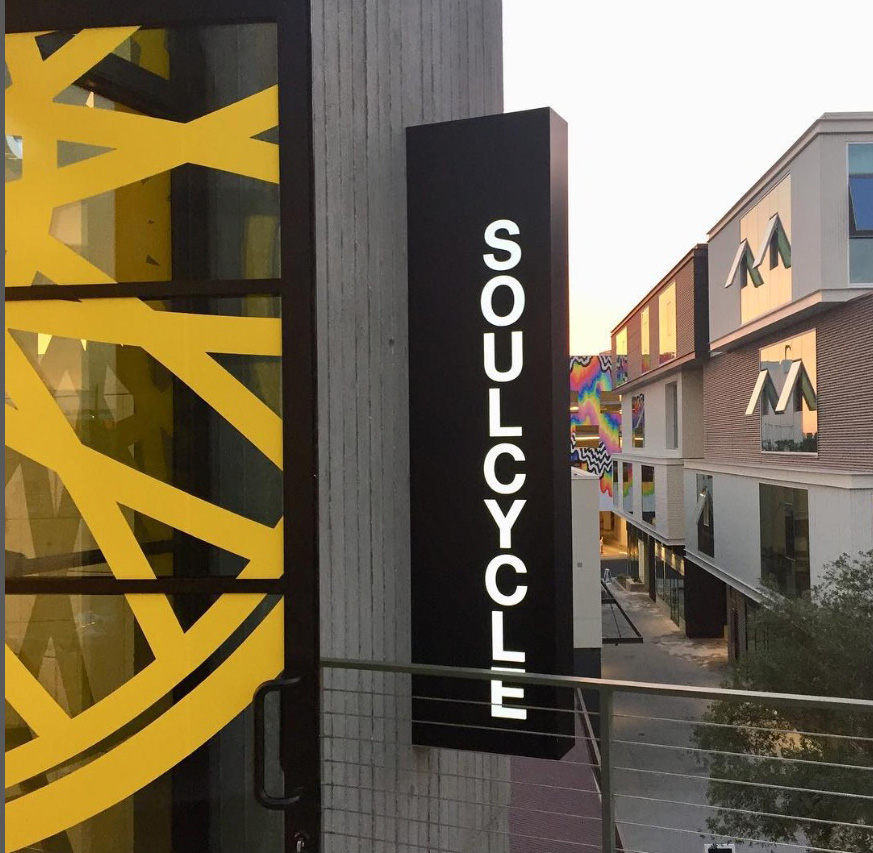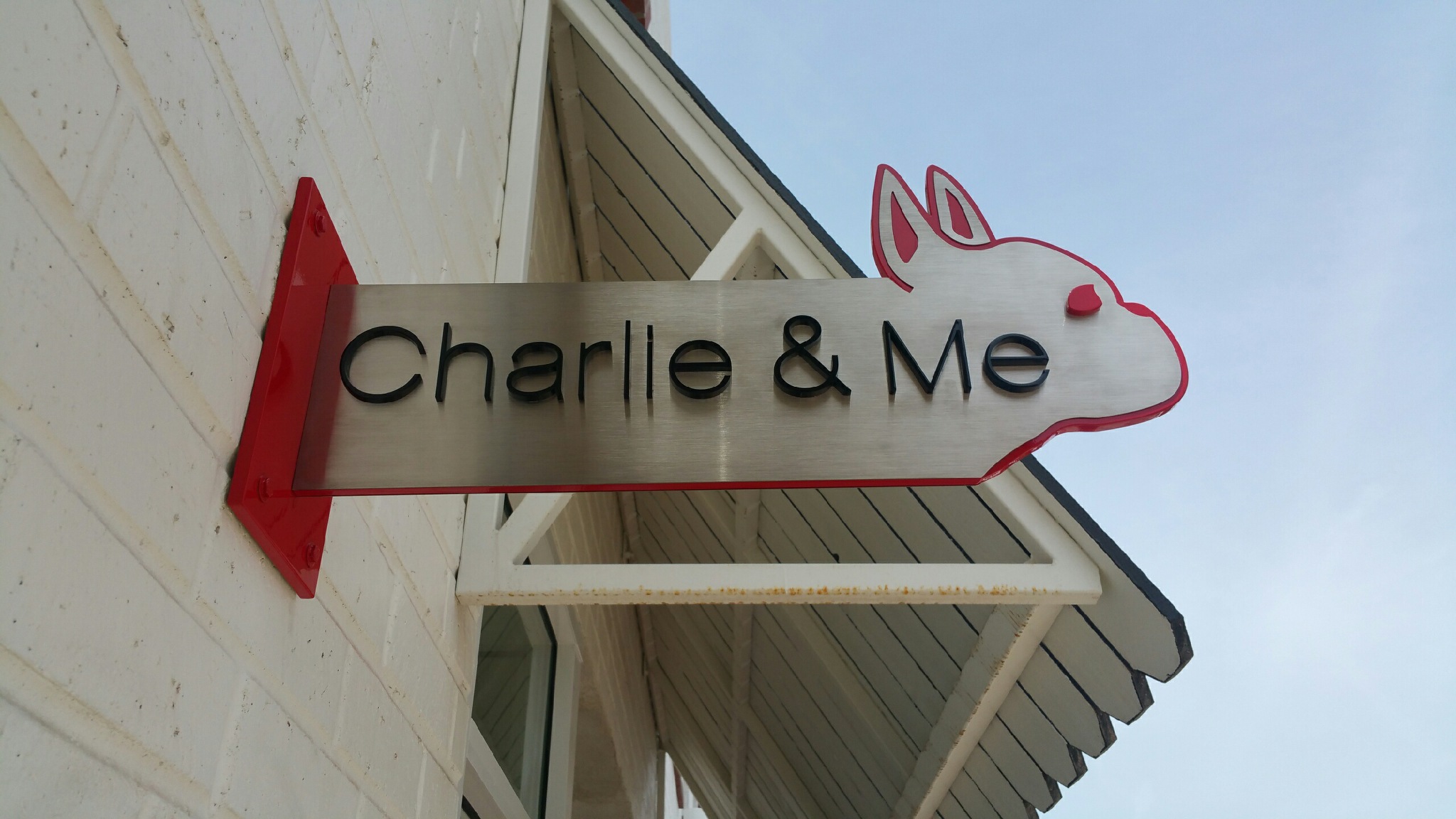Projecting Signs and Blade Signs
The terms “projecting sign” and “blade sign” are interchangeable. Shorthand uses “blade signs”, but most city municipalities and architects refer to them as “projecting signs”. That said, they are one of the most efficient and effective ways of gaining visibility from the vantage of busy streets and pedestrian traffic. These signs are always perpendicular to a wall. The best addition that a new business can make to its new sign is an accompanying blade sign. Projecting signs are perfect for corner locations and also for areas that have tree cover as the signs are always placed 8 feet above the sidewalk. They are also convienient if you want to maximize your business name and then add your logo in an additional adjacent sign.


What are the types of a blade sign?
The sky is the limit regarding creativity and impact. Blade signs can be playful and fun with all types of custom shapes and sizes. Often the business logo or name will direct the sizing. From there the options are extensive. Here are a few examples of projecting sign types:
- Aluminum
- Stainless Steel
- Wood
- Plastic
- Neon
- LED illuminated
- Channel letter
Blade Signs
What are the benefits?

History of Projecting Signs and Blade Signs
Blade signs, also known as projecting signs, have a rich history that spans several centuries and plays an integral role in commercial signage evolution. Their origins and development highlight their longstanding effectiveness in urban and retail settings. Here’s a brief overview of the history of blade signs:
Medieval and Renaissance Periods
The use of blade signs dates back to the Middle Ages in Europe. During this time, the majority of the populace was illiterate, so shop owners needed a way to communicate the nature of their business visually. Butchers, blacksmiths, bakers, and innkeepers would use signs that featured simple, bold imagery such as a loaf of bread, an anvil, or a pair of scissors. These signs were made from wood, stone, or wrought iron and were often elaborately carved or forged, hanging perpendicular to the street to catch the eyes of passersby from both directions.
17th and 18th Centuries
As urban centers grew, so did the use of blade signs. They became more ornate and larger, sometimes to the detriment of the pedestrian or street traffic due to their size and protrusion onto the street. In London, for example, the size and placement of blade signs eventually became a regulatory issue because overly large signs could pose hazards to passersby or obstruct the view.
19th Century to Early 20th Century
The Industrial Revolution brought advancements in materials and manufacturing processes, allowing for even more detailed and durable signs. With the introduction of cast iron and later, pressed metal, blade signs could be produced in larger quantities and at lower costs. The designs became more intricate and could include not just flat signs but also three-dimensional figures.
Mid-20th Century
The advent of neon in the 1920s and 1930s introduced a new era for blade signs. Businesses began to use brightly lit neon signs to draw attention during nighttime, transforming cityscapes with vibrant colors and glowing lights. This period marked a boom in the use of illuminated signs, making them popular in the United States, particularly in places like Las Vegas and Times Square.
Late 20th Century to Present
With the growing stringency of urban planning and sign regulations in many cities, the size and illumination of blade signs have often been moderated. However, their utility in urban environments where foot traffic is significant has ensured their continued popularity. Modern materials such as acrylic, LED lighting, and digital printing have further enhanced the effectiveness and attractiveness of blade signs.
Today, blade signs are appreciated not only for their practicality in business identification and advertising but also for their aesthetic contribution to the streetscape. They remain a favored choice among businesses in dense urban areas and historical districts where they reflect a blend of tradition and modernity.

